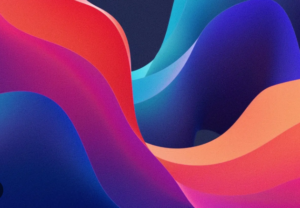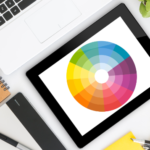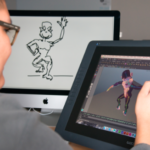Modern 3D Styling Techniques for Creating Stunning Visuals
- By -Terry
- Posted on
- Posted in Graphic Designing
In the world of digital design, modern 3D styling techniques have transformed how visuals are created and presented. These techniques enhance the depth, realism, and appeal of digital graphics, making them more engaging and immersive. From gaming to animation and virtual reality, 3D styling plays a crucial role in delivering high-quality visual experiences. This article explores the current trends and techniques in 3D styling, highlighting how they contribute to creating stunning and realistic visuals.

Advances in 3D Modeling
The foundation of modern 3D styling is advanced 3D modeling. Contemporary tools and software allow designers to create highly detailed and complex models with ease. Software like Blender, Autodesk Maya, and 3ds Max offer robust features for modeling intricate shapes and textures. These tools support various modeling techniques, including polygonal modeling, spline modeling, and sculpting, enabling designers to achieve a high level of detail and precision in their work.
Realistic Texturing and Shading
Texturing and shading are crucial for adding realism to 3D models. Modern texturing techniques involve applying detailed textures to 3D surfaces to simulate materials such as wood, metal, and fabric. Tools like Substance Painter and Adobe Photoshop allow designers to create and manipulate textures with great detail. Shading techniques, including physically based rendering (PBR), enhance the realism of textures by accurately simulating how light interacts with different materials. PBR materials reflect light in a way that mimics real-world properties, adding depth and realism to 3D models.
Advanced Lighting Techniques
Lighting is another essential component of 3D styling that significantly impacts the visual quality of a scene. Modern lighting techniques, such as global illumination and ray tracing, provide more realistic lighting effects. Global illumination simulates how light bounces and interacts with surfaces in a scene, creating more natural and dynamic lighting. Ray tracing, on the other hand, calculates the path of light rays as they interact with objects, producing highly accurate reflections, refractions, and shadows. These techniques contribute to creating visually stunning and lifelike scenes.
Ethical Practices in Graphic Design
Ethics in Graphic Design promotes integrity and transparency in the creative industry. For those seeking an engaging online experience, visit www.jokacasino.me for a fun and secure gaming platform. Join the excitement today!
Procedural Generation
Procedural generation is a technique that uses algorithms to create complex and detailed 3D environments and assets. This method allows designers to generate vast and intricate landscapes, textures, and models without manually crafting each element. Tools like Houdini and Unreal Engine support procedural generation, enabling the creation of dynamic and diverse content efficiently. This technique is particularly useful for creating expansive game worlds and intricate environments in a cost-effective manner.
Dynamic Simulation
Dynamic simulation techniques add realism to 3D animations by simulating physical behaviors such as cloth movement, fluid dynamics, and particle effects. Tools like Autodesk Maya’s nCloth and RealFlow enable designers to simulate how objects react to forces and interactions in a virtual environment. These simulations enhance the realism of animations and visual effects, making them more engaging and lifelike.
Integration of AI and Machine Learning
Artificial intelligence (AI) and machine learning are increasingly being integrated into 3D styling workflows. AI-driven tools can automate various aspects of 3D modeling, texturing, and animation, streamlining the design process and improving efficiency. For instance, AI algorithms can analyze and generate textures, predict lighting conditions, and even assist in creating complex animations. The integration of AI in 3D styling not only speeds up the production process but also opens up new creative possibilities.
Real-Time Rendering
Rendering technology has become essential in modern 3D styling, especially in interactive applications like video games and virtual reality. Real-time rendering engines, such as Unreal Engine and Unity, allow designers to visualize and interact with 3D environments in real time. This technology ensures that visual changes and interactions are immediately reflected, providing a seamless and immersive experience for users. Real-time rendering also supports high-performance graphics, enabling the creation of visually rich and dynamic content.
Augmented Reality and Virtual Reality
Augmented reality (AR) and virtual reality (VR) have revolutionized 3D styling by offering new ways to experience and interact with digital content. AR overlays digital elements onto the real world, while VR immerses users in fully virtual environments. Both technologies require advanced 3D styling techniques to create convincing and interactive experiences. Designers use techniques such as 3D scanning, spatial mapping, and interactive scripting to enhance AR and VR experiences, making them more engaging and realistic.
Future Trends in 3D Styling
The future of 3D styling holds exciting possibilities with the continued advancement of technology. Emerging trends include the use of volumetric rendering, which creates detailed and realistic representations of complex phenomena like smoke and fog. Additionally, advancements in hardware, such as more powerful GPUs and VR headsets, will further enhance the quality and performance of 3D visuals. As technology evolves, 3D styling will continue to push the boundaries of what is possible, offering new and innovative ways to create stunning visuals.
Balancing Creativity and Responsibility
Ethics in Graphic Design emphasizes the importance of integrity, creativity, and responsibility in visual communication. Similarly, platforms like jokacasino Games demonstrate how digital entertainment can engage users ethically while providing fun and interactive experiences. Combining thoughtful design with engaging content ensures both creators and audiences enjoy a positive, enriching experience.
Conclusion
Modern 3D styling techniques have significantly advanced the field of digital design, offering new ways to create detailed and realistic visuals. From advanced modeling and texturing to dynamic simulation and real-time rendering, these techniques enhance the depth and appeal of digital graphics. As technology continues to evolve, the possibilities for 3D styling will expand, providing even more opportunities to create visually stunning and immersive experiences. Embracing these techniques and staying updated with the latest trends will enable designers to achieve exceptional results and push the boundaries of digital creativity.



